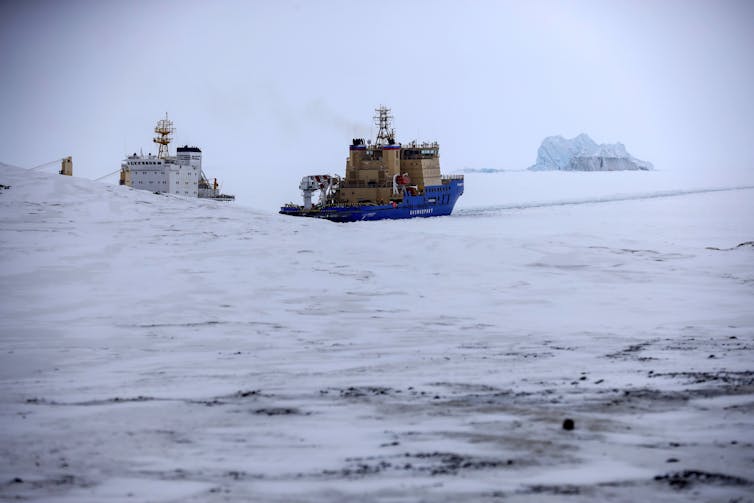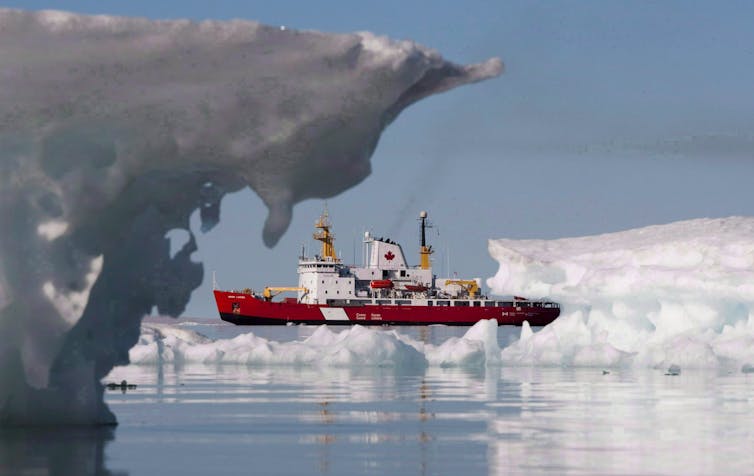The recent release of the Department of National Defence’s policy update, Our North, Strong and Free, outlines the progress being made by the federal government on two major security issues facing Canada: the warming Arctic and cyber warfare.
A major focal point of the policy update is the need to develop cutting-edge, quantum-based defence technology that will help Canada address these two threats.
Quantum technology uses the sensitivity of sub-atomic particles to create increasingly precise measurements of an environment. This provides Canada the ability to better track environmental changes, potential trespassers in sovereign territory and the beginnings of cyberattacks before they become real threats. It’s a game-changer in both physical and cyber domains.
The Arctic and climate change are a major focus of the policy update due to melting polar ice that will make it easier for competitive states to traverse the area and reap economic benefits.
Of particular concern are ships coming from Canada’s top two adversaries, Russia and China. To combat the threat, Canada says it intends to develop improved quantum sensing technology, in which light sources are able to produce more sensitive and accurate sensing of their environment over a period of time.

Quantum tech strategies
Just a few months before the release of the policy update, Canada released Quantum 2030, a strategy that outlines its quantum goals and how it’s aiming to put them into action.
Over the next seven years, Canada will mobilize research teams with its allies to fine-tune the technology. It’s currently in the first year of the strategy that calls for continuing research into quantum technology. The ensuing years will focus on the goals of Our North, Strong and Free.
Quantum sensing has been specialized and applied to radar technologies that will be used to chart and monitor Arctic territory. Furthermore, with support from its Five Eyes allies, Canadian information is being made quantum-safe through extensive investment into cryptography.
This means that Canadian intellectual property produced through dozens of national funding projects could be further protected from competitive, hostile entities like China and Russia.
The Department of National Defence and the Canadian Armed Forces unveiled their first major quantum strategy, the Quantum Science and Technology Strategy, in 2021.
The strategy acted as the foundation for Canada’s quantum industry and its goal was to ensure quantum can apply to defence. This was the first time Canada linked quantum technology, climate and the Arctic.
These promising proposals led to the development of an official quantum-focused strategy entitled the National Quantum Strategy in 2023. It has allocated $360 million to address existing gaps in knowledge in quantum development.
Working with academia, private sector
There has been direct collaboration with both academic institutions and private industry on quantum technology. The aim is to invest in a diverse quantum portfolio to protect information, process data through quantum computing and to detect new threats in Canadian and allied territory.
Sensing technology is a significant component of each of these quantum technology strategies.
The technology is vital for future climate change detection and can play a key role in Canada’s pursuit of innovative, new and useful technology that will benefit its scientific leadership among its allies.
The latest defence policy update expresses an aim to improve search-and-rescue procedures in the North, increase Arctic charting and improve monitoring of shared NORAD airspace. The heightened sensitivity of quantum sensors will allow Canada to make these contributions.

Cyberattacks
Our North, Strong and Free also called for the development of proper countermeasures against potential cyberattacks. Canada has been pursuing protections against state-sponsored hackers through quantum cryptography.
Quantum-based cyberspace protections prevent incredibly efficient computers from cracking codes by radically slowing their ability to process information.
The policy update’s focus on the cyber domain — which includes any aspect of the digital sector, public or private — is fuelled by the global increase in grey-zone conflicts, actions taken by a state that don’t necessarily warrant a declaration of war.
Read more: Cybersecurity researchers spotlight a new ransomware threat – be careful where you upload files
Usually, this involves a cyberattack, such as the widespread Russian disinformation campaign during the 2016 American election.
Canada has stated in the policy update that it will look not only into quantum computing to combat cyber threats, but also artificial intelligence, machine learning and other technological advances to secure Canadians online. Protecting Canadian information could safeguard Canada from potential grey-zone attacks, like intellectual property theft.
Moving forward
On Canada’s top security priorities — cybersecurity and Arctic safety — the federal government has been moving quietly but purposefully, with support from its allies.
The update also pledged an increase in funding to NORAD and NATO to 1.76 per cent of Canada’s GDP from its previous 1.33 per cent.
While not yet at the two per cent NATO guideline, these increases also suggest Canada is taking its security seriously.

